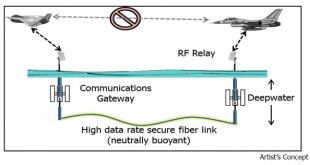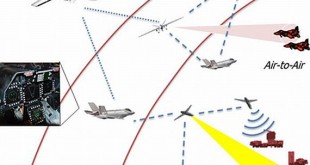All modern forces depend on unimpeded access to, and use of, the EM spectrum in conducting military operations. Therefore, there is a requirement to gain and maintain an advantage in the electromagnetic spectrum by countering adversary’s systems and protecting one’s own systems. Thus the EM spectrum can no longer be …
Read More »China to test magnetized plasma artillery which can travel at hypersonic speeds
Plasma is a state of super excitement of mater and can be described as a super hot gas. The Plasma Spray Process is basically the spraying of molten or heat softened material onto a surface to provide a coating. Plasma spray is a versatile technology used for production of environmental …
Read More »USAF’s Multi-Domain Command and Control (MDC2) requires Artificial Intelligence technologies for Information Analysis and Targeting
Advanced Integrated Air Defense Systems, Anti-satellite, and computer network attack weapons can hold capabilities in air, space and cyber at risk and create Anti-Access and Area Denial (A2AD) quandaries. The goal of Multi-Domain Operations is to ensure the ability to integrate operations in multiple domains and create complex dilemmas for …
Read More »Resistive RAM (RRAM), a Non-volatile memory (NVM) technology, key to support artificial intelligence on the Internet of Things, or “edge AI”.
Ever-growing data generation driven by mobile devices, the cloud, the IoT , and big data, as well as novel AI applications, all part of the megatrends, requires continuous advancements in memory technologies. RRAM is a nonvolatile memory that is similar to PCM. The technology concept is that a dielectric, …
Read More »Perovskite-based LEDs are beginning to rival OLEDs in terms of efficiency
Perovskites have generated huge interest in recent years because of their potential for solid-state lighting and displays, despite lagging behind other state-of-the-art technologies in efficiency and longevity. Now two independent teams have reported light-emitting diodes (LEDs) based on perovskites that have surpassed a milestone in efficiency [Cao et al., Nature …
Read More »DARPA SCORE program Aims to develop automated tools to Score Social and Behavioral Research important for national security
Social science provides a variety of research and educational capabilities to military to address the human dimensions of military organizations and their operational contexts. For instance, psychological and human performance criteria are firmly rooted in social science constructs within the U.S. Department of Defense (DOD). In the United States, …
Read More »Future Global Quantum internet could be brought down by Quantum terrorists
Quantum cryptography is an emerging technology in which two parties may simultaneously generate shared, secret cryptographic key material using the transmission of quantum states of light. A unique aspect of quantum cryptography is that Heisenberg’s uncertainty principle ensures that if Eve attempts to intercept and measure Alice’s quantum transmissions, her …
Read More »DARPA’s TUNA program develops fiber optical undersea communication Network for backup in contested environment
The capability of Russia and China to disrupt American military wireless and satellite communications using electronic warfare has been rising. This is athreat to US Navy operations that require connectivity among a diverse set of platforms, including submarines, surface ships, aircraft, and shore sites. The links among these platforms support …
Read More »DARPA DBM develops automated AI decision aid for managing Distributed air-to-air and air-to-ground combat under Electronic Warfare environment
As commercial technologies become more advanced and widely available, adversaries are rapidly developing capabilities that put our forces at risk. To counter these threats, the U.S. military is developing systems-of-systems concepts in which networks of manned and unmanned platforms, weapons, sensors, and electronic warfare systems interact over robust satellite and …
Read More »DARPA DRBE developing Super Computers for Live Virtual Constructive training to test AI enabled Radar and EW systems
According to a 23 January DARPA solicitation, the cost, complexity, and limited availability of military ranges mean that operational training and system test and evaluation will increasingly take place in completely virtual environments. Furthermore, the increasing adoption of artificial intelligence (AI) will require orders of magnitude of more test and …
Read More » International Defense Security & Technology Your trusted Source for News, Research and Analysis
International Defense Security & Technology Your trusted Source for News, Research and Analysis










